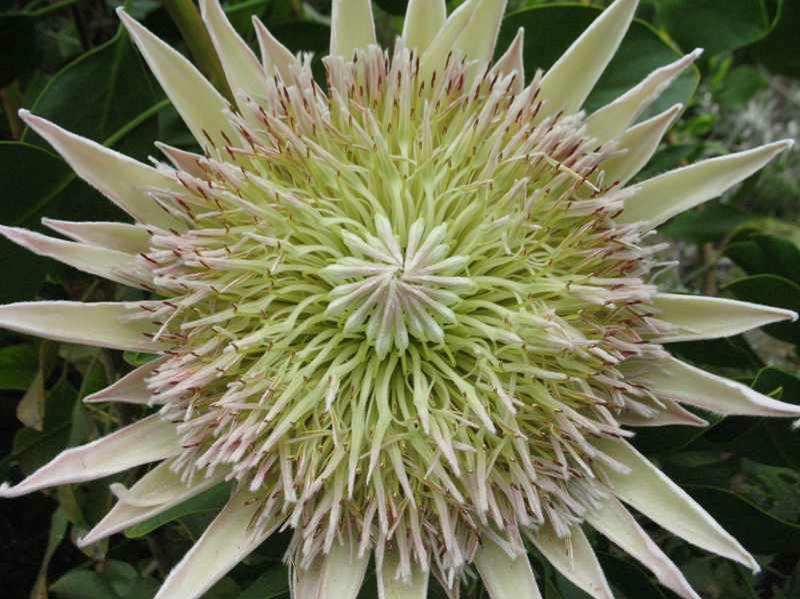King protea (Protea cynaroides)
King protea
Protea cynaroides, commonly called king protea, is a broadleaf evergreen shrub that is native to South Africa. It typically matures to 3-4′ (less frequently to 6′) tall. It is best known for its huge goblet or bowl-shaped flower heads from 5″ to 12″ in diameter. Each flower head consists of a large, domed, central mass of tepaled inner flowers subtended and surrounded by stiff, pointed, showy bracts ranging in color from red, to pink to creamy white. In its native habitat, flower heads will bloom sporadically throughout the year, but primarily in the warmer months. Somewhat leathery, rounded to elliptic, glossy, dark green leaves grow to 5 1/2″ long.
Genus name honors the Greek sea-god, Proteus, with the power of assuming a diversity of shapes a reference to the diversity within the genus.
Specific epithet means “like Cynara” (artichoke genus) in reference to the artichoke-like appearance of the flower heads.
King protea is the national flower of South Africa.

Winter hardy to USDA Zones 9-10 where it is typically grown in acidic, poor to average, medium moisture, well-drained soils in full sun. Best with moderate amounts of water once established.
| Hardiness zone | 9 - 12 |
| Sun light | Full sun |
| Water | Medium |
| Maintenance | Medium |
No known serious insect or disease problems.
Ornamental flowering shrub or garden specimen in frost free areas. Produces magnificent fresh cut or dried flowers. Greenhouse plant in colder areas.
| Common name | King protea |
| Botanical name | Protea cynaroides |
| Plant type | Broadleaf evergreen |
| Family | Proteaceae |
| Hardiness zone | 9 - 12 |
| Water | Medium |
| Maintenance | Medium |
| Flower color | Red to pink to creamy white |
| Flowering period | Seasonal bloomer |
| Height | 3 - 4 ft. |
| Width | 3 - 4 ft. |